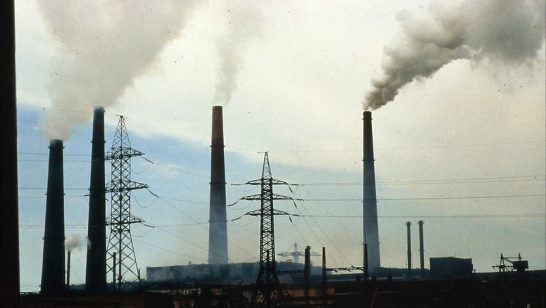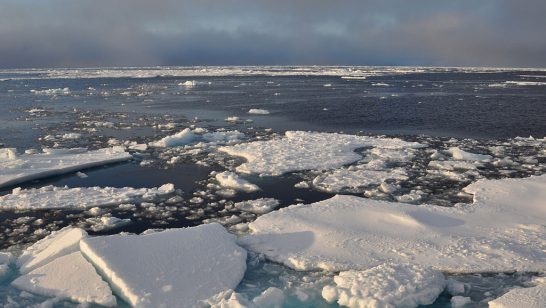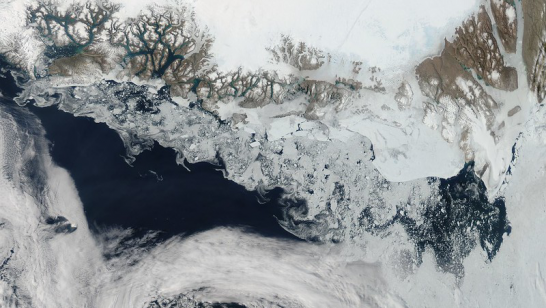
International cooperation is essential to implement global climate goals, which will again be at the centre of discussion at next weeks COP26 climate summit. Today, many politicians, officials and experts involved in EU-Russian relations are enthusiastic about cooperation between Moscow and Brussels on climate and energy transition. There are strong reasons to believe in this cooperation. But equally, there are reasons to doubt that an EU-Russian climate partnership will materialise. Even if it does, its potential to bring a new détente in Russia’s relations with the West will remain limited.
The EU has for a long time positioned itself as a global environmental leader. Its central role in the Paris Agreement is just a recent illustration of this trend. In 2019 this leadership was reinforced through the Green Deal; the initial communication was bolstered by the European Climate Law that increased the EU’s obligations, EU budgetary funding, changes in grant and credit finance, and the revision of guidelines for business investments. The EU has also actively integrated climate policy into its external activities, at both multilateral and bilateral tracks.
Despite the progressive deterioration of EU-Russian relations, especially since 2014, climate change and energy transition have been present on the bilateral agenda. Discussions on this topic were placed in the category of ‘selective engagement’ in the 2016 EU guiding principles on Russia. In the latest EU joint communication on Russia, they came under the heading ‘engage’. At the same time, both the 2016 and 2021 documents elaborate on the need for the EU to strengthen its resilience to Russian threats, in particular to that of Moscow manipulating energy supply to the EU. The 2021 communication also frames energy transition, which is the key dimension of the EU’s policy to fight climate change, as a way to constrain Russia, in particular through the EU becoming more self-sufficient in its energy supply.
Despite the progressive deterioration of EU-Russian relations, especially since 2014, climate change and energy transition have been present on the bilateral agenda. Tatiana Romanova
Moreover, engaging with Russia on climate change and energy transition is primarily the domain of those EU officials and experts who deal with Russia. EU general documents (on the Green Deal, on the development of hydrogen, and on CBAM) hardly refer to Russia as a partner, nor do they specify how EU-Russian relations can contribute to the EU’s and international climate goals. This is in contrast to, for example, the US, China or neighbouring countries. Contributions of Russian participants to policy consultations are dismissed (for example, in the Commission explanation of CBAM). Moreover, marketing energy transition as a way to ease dependence on Russia is strongly supported by EU renewable business, although big businesses support further cooperation with Russia and reliance on natural gas, including for the production of hydrogen.
In sum, the EU has two competing lines on climate change and energy transition cooperation with Russia. These are selective engagement and resilience, with the latter’s logic prevailing in EU documents. Not only are they grounded in the securitisation of Russia’s threats, but they also serve the EU’s internal climate goals, namely contributing to the increase of the share of renewables.
Things are no less complicated on the Russian side. Until recently, Moscow officials and a good number of experts challenged the very existence of climate change or its negative impact on the planet and on the Russian economy. Yet Russia’s official position evolved dramatically in 2020-2021. Not only did President Vladimir Putin support the need to fight climate change, the Russian government also initiated a number of changes in their national legislation and policy planning documents. In particular, Russia finally adopted its law on the limits of greenhouse gas emissions. It declared the goal to achieve carbon neutrality by 2060, and the relevant strategy is being prepared. The Government also approved the concept of hydrogen development, documents on green taxonomy, and requirements for the verification of carbon emissions. These changes are the result of international transformation and the realisation that the flow of hydrocarbon revenues can dry out, challenging Russia’s internal stability.
At the same, several factors could challenge Russia’s advancement of climate change mitigation. On the foreign policy side, it is a result of the general tense relations with the West and resistance to West-enforced norms and rules. Numerous internal drivers are also at work against decarbonisation changes in Russia. One is the rhetoric that Russia has already achieved a lot on the way to carbon neutrality (due to the decrease of emissions since the 1990s, reliance on nuclear and hydropower energy, and emission sinks in the forest). Secondly, there is strong societal resistance to any change. This is a result of overall apathy, the state not encouraging activism, and relatively low awareness of the dangers of climate change among the general public. In addition, businesses resist higher climate targets, whereas investments required to achieve carbon neutrality and energy transition are enormous. Finally, Russia has previously demonstrated insufficient implementation of the adopted targets and in approving relevant legislation, because of the lack of administrative capacity and absence of bylaws.
In sum, although Russia seems to have changed its attitude to climate issues and energy transition at the level of rhetoric, nothing guarantees that what is promised will be implemented; that Russia will not limit itself to declarations or framework legislation that has no mechanisms for implementation.
The EU-Russia climate partnership equally depends on the EU prioritising selective engagement over resilience and on Russia implementing its obligations by turning rhetoric into reality. Tatiana Romanova
The EU-Russia climate partnership, therefore, equally depends on the EU prioritising selective engagement over resilience and on Russia implementing its obligations by turning rhetoric into reality. Without this, there is a risk that the business as usual of mutual reproaches will prevail in EU-Russian relations. To ensure the success of a climate partnership, both partners have to consciously choose it. In addition, their cooperation on climate change and energy transition should be shielded from the overall negative atmosphere of their bilateral relations. In the current situation when cooperation is scarce, it is easy to politicise discussions on climate and energy transition, infecting them with debates on who sets the norms and what solutions are correct by definition.
It is also premature to hope that a climate partnership, if implemented, will change the tone of Russia-EU (Russia-West) relations. These are too confrontational at the moment, and too much depends on the lack of consensus over key principles of international order, its trends and values. Despite this, a climate partnership can facilitate building trust in the EU-Russian relationship. This, together with joint climate change mitigation, will already be an achievement.
The opinions articulated above represent the views of the author(s) and do not necessarily reflect the position of the European Leadership Network (ELN) or any of its members. The ELN’s aim is to encourage debates that will help develop Europe’s capacity to address the pressing foreign, defence, and security policy challenges of our time.
Image: Wikimedia, Zhiguli Hydroelectric Power Station



